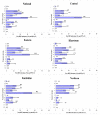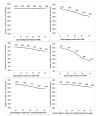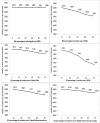HIV Modes of Transmission in Sudan in 2014
- PMID: 32202093
- PMCID: PMC7093043
- DOI: 10.15171/ijhpm.2019.91
HIV Modes of Transmission in Sudan in 2014
Abstract
Background: In Sudan, where studies on HIV dynamics are few, model projections provide an additional source of information for policy-makers to identify data collection priorities and develop prevention programs. In this study, we aimed to estimate the distribution of new HIV infections by mode of exposure and to identify populations who are disproportionately contributing to the total number of new infections in Sudan.
Methods: We applied the modes of transmission (MoT) mathematical model in Sudan to estimate the distribution of new HIV infections among the 15-49 age group for 2014, based on the main routes of exposure to HIV. Data for the MoT model were collected through a systematic review of peer-reviewed articles, grey literature, interviews with key participants and focus groups. We used the MoT uncertainty module to represent uncertainty in model projections and created one general model for the whole nation and 5 sub-models for each region (Northern, Central, Eastern, Kurdufan, and Khartoum regions). We also examined how different service coverages could change HIV incidence rates and distributions in Sudan.
Results: The model estimated that about 6000 new HIV infections occurred in Sudan in 2014 (95% CI: 4651-7432). Men who had sex with men (MSM) (30.52%), female sex workers (FSW) (16.37%), and FSW's clients accounted (19.43%) for most of the new HIV cases. FSW accounted for the highest incidence rate in the Central, Kurdufan, and Khartoum regions; and FSW's clients had the highest incidence rate in the Eastern and Northern regions. The annual incidence rate of HIV in the total adult population was estimated at 330 per 1 000 000 populations. The incidence rate was at its highest in the Eastern region (980 annual infections per 1 000 000 populations).
Conclusion: Although the national HIV incidence rate estimate was relatively low compared to that observed in some sub-Saharan African countries with generalized epidemics, a more severe epidemic existed within certain regions and key populations. HIV burden was mostly concentrated among MSM, FSW, and FSW's clients both nationally and regionally. Thus, the authorities should pay more attention to key populations and Eastern and Northern regions when developing prevention programs. The findings of this study can improve HIV prevention programs in Sudan.
Keywords: HIV; Modes of Transmission (MoT); Sudan.
References
-
- UNAIDS. Global AIDS Update. Geneva: UNAIDS; 2016. https://www.unaids.org/sites/default/files/media_asset/global-AIDS-updat.... Published 2016.
-
- WHO, UAIDS, UNICEF. Global report: UNAIDS report on the global AIDS epidemic. Geneva: UNAIDS; 2013.
-
- UNAIDS. UNAIDS AIDSinfo, Indicators. http://aidsinfo.unaids.org/. Published 2018.
MeSH terms
Grants and funding
LinkOut - more resources
Full Text Sources
Medical



